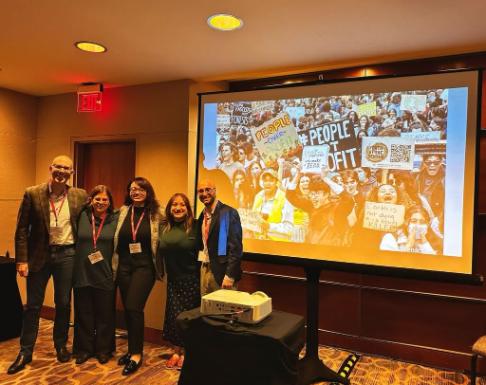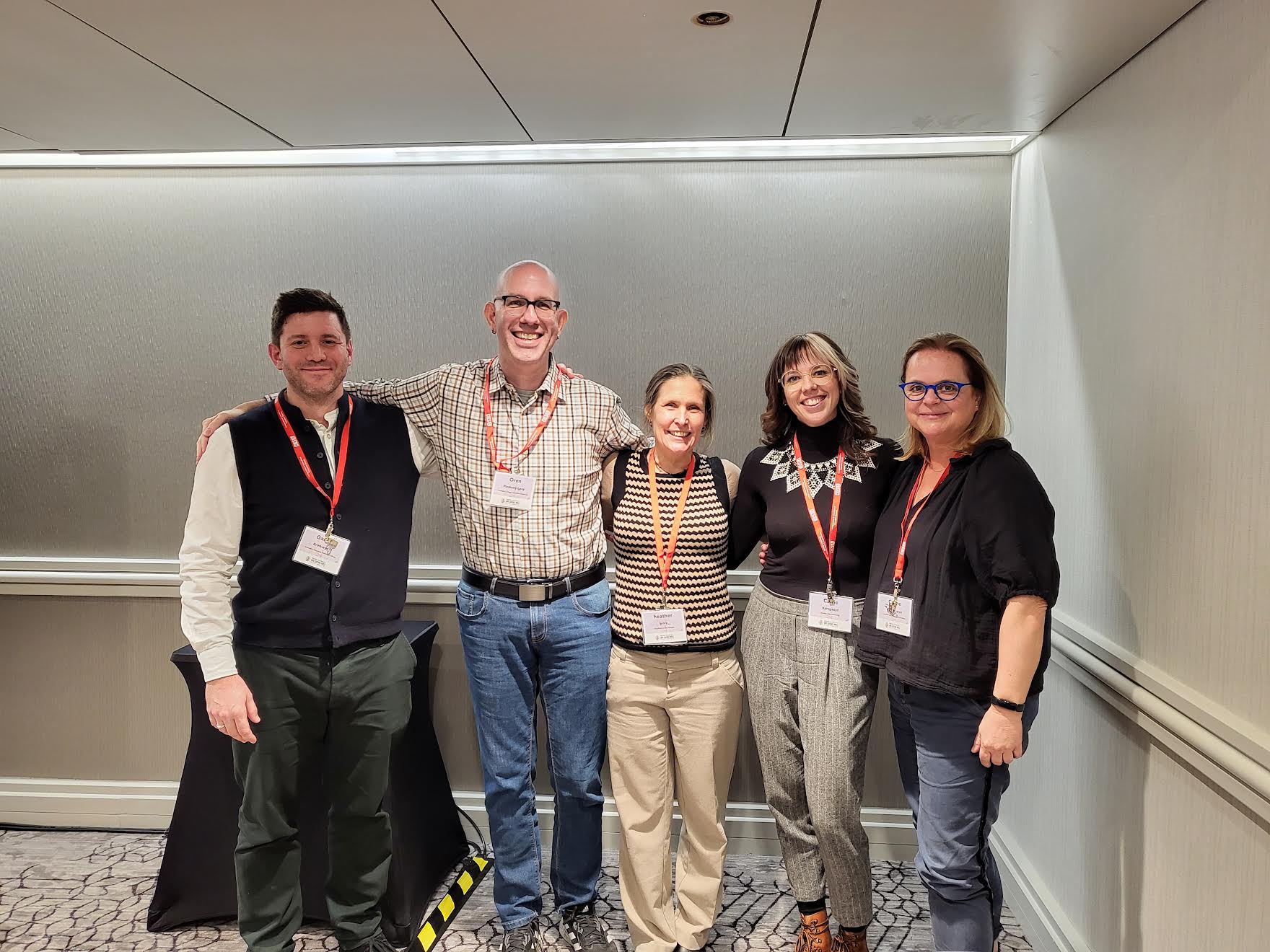CIES accepted two CSF panels. One panel focused on Climate Change, Society, and Youth Activism while the other honed in on Improving Climate Change Communication and Education in Times of a Planetary Crisis. These two panels were amongst multiple sessions at CIES which focused on the intersection of education and climate change.
Climate Change, Society, and Youth Activism
Climate change is the greatest threat of our time (AAAS, 2009; IPCC, 2014). Not only does climate change endanger the environment and human lives, it also amplifies social, economic, and racial inequality between and within communities across generations (Chancel & Piketty, 2015; Hamman et al., 2018). Children born this decade will face the brunt of climate change when they graduate high school (IPCC, 2018). For these high school graduates, our planet will be “warmer, wetter, and more unstable than the one we inhabit today” (Klinenberg, Araos, & Hoslov, 2020: 650).
The past five years have witnessed the emergence of a global youth climate justice movement that has challenged both governments and societies to act urgently to mitigate climate change and reduce its potential impacts on the environment, society, and economy. This global movement, which was inspired by Greta Thunberg from Sweden, is coordinated through organizations such as Fridays for Future (FFF) that has successfully mobilized millions of students in the US and around the world. Coupled with this activism is growing climate concern and anxiety among youth (Hickman et. al., 2021; Kessler, 2022; Pizmony-Levy & Kessler, 2021, 2022). Moreover, children have felt let down by government leaderships and adults who are unwilling to act in ways that might save our planet. What factors explain the emergence of the global youth climate justice movement? What is the role of the education sector in this movement? This panel discussed these questions and others from those in attendance.
The panel included four papers that together offer a comprehensive perspective on youth activism in times of climate crisis. The panel opened with two papers that interrogate the motivations for climate activism and the role of schools in shaping these motivations. Both papers drew on interviews with youth climate activists. The first paper, by Erika Kessler, examined youth activism in New York City, US. The second paper, by Aya Natan and Dafna Gan, examined the case of youth activism in Israel. The third paper, by Darren Rabinowitz, analyzed the link between youth activism (including, but not limited to, climate change) and contextual factors – norms expressed in national constitutions. This paper took a cross-national approach using data from the 2016 International Civic and Citizenship Study (ICCS). The fourth paper, by Christine Torres and colleagues, explored the experiences of graduate students and high school students in a climate justice oriented partnership.

Improving Climate Change Communication and Education in Times of a Planetary Crisis: International and Domestic Efforts
Climate change is an existential threat to life on planet Earth. A 2021 report from the Intergovernmental Panel on Climate Change (IPCC) showed that emissions of greenhouse gases from human activities is responsible for a rise in global temperature of approximately 1.1°C of since the late 19th century. The IPCC Report also found that climate change has brought different changes around the world, including sea level rise, and extreme weather events (e.g., floods, droughts, heat waves).
The United Nations Framework Convention on Climate Change (UNFCCC, 1992) acknowledged the role of education in mitigation of and adaptation to climate change. Article 6 of the Convention, titled “Education, Training and Public Awareness”, seeks to reduce the impact of climate change by enabling society to be a part of the solution. Specifically, the Convention called on countries to promote, facilitate, and collaborate on the development and implementation of educational programmes and materials on climate change and its effects. The Conference of the Parties in 2012 (COP 18) and the Paris Agreement (2015) further elaborated Article and put forward the Action for Climate Empowerment (ACE) framework and guidelines. Research on national reports to the UNFCC shows two concerning patterns: “(a) while climate change education and communication content appeared in submissions, little is currently suitable for monitoring purposes; and (b) there were notable gaps in climate change education and communication activities, given a pronounced emphasis on cognitive knowledge over affective and action-oriented approaches” (McKenzie, 2021: 631).
This panel brought together researchers to critically examine efforts to improve Climate Change Communication and Education in K-12 schools worldwide (CCE). The first paper, by Heather Price and Oren Pizmony-Levy, described the development and potential contribution of the new module on sustainability and climate change in the 2024 Teaching and Learning International Survey (TALIS) by the OECD. The second paper, by Carine Verschueren illuminated the way in which sub-national environmental and sustainability policies are influenced by school based and non-school based actors. The third paper, by Carrie Anne Karsgaard, critically examined land-based responses to the climate crisis, making recommendations for climate education. Together, the papers provided a holistic perspective on the ways in which the education sector contributes to climate mitigation and adaptation. The authors engaged different literatures that are relevant for educational improvement in International Comparative Education, including: globalization theories, non-state actors, and policy/practice gaps. By doing so, the panel contributes to the theme of the conference “Improving Education for a More Equitable World”.
Reflections
Some key takeaways included comments from colleagues at the International Association for the Evaluation of Educational Achievement (IEA) who asked Darren Rabinowitz what additional questions would be helpful to include in future International Civic and Citizenship Education Study (ICCS) surveys. The Climate Change, Society, and Youth Activism panelists offered several ideas for questions including emotions and climate change, parental involvement in climate learning and to what extent are youth learning about climate change outside of school.
On the other hand, Improving Climate Change Communication and Education in Times of a Planetary Crisis hosted an multi-scalar conservation with explorations at the global, national, and local levels. Attendees of the panel asked critical questions around little understood mechanisms of climate communication such as social media, in reference to Carrie Karsgaard’s work. Christina Torres reflected on the importance of discussing youth climate activism from local, national, and international perspectives. She presented learnings from the first two years of the Youth at the Center program, and how the youth participation in our program changed through time. This was her first time presenting this research, and it was great to get audience feedback on the ways we are thinking about the co-production framework which is at the core of the paper she’s writing on the subject.
Overall, the panels contributed to the growing presence and interest in Environmental and Sustainability Education (ESE) at CIES. The Center is building off of the growing interest at CIES in ESE and Climate Change Education (CCE) and is already working on panels for CIES 2024 which will speak specifically to the theme of protest. Stay tuned for more information about the Center’s panels on youth climate action, ESE and CCE.
